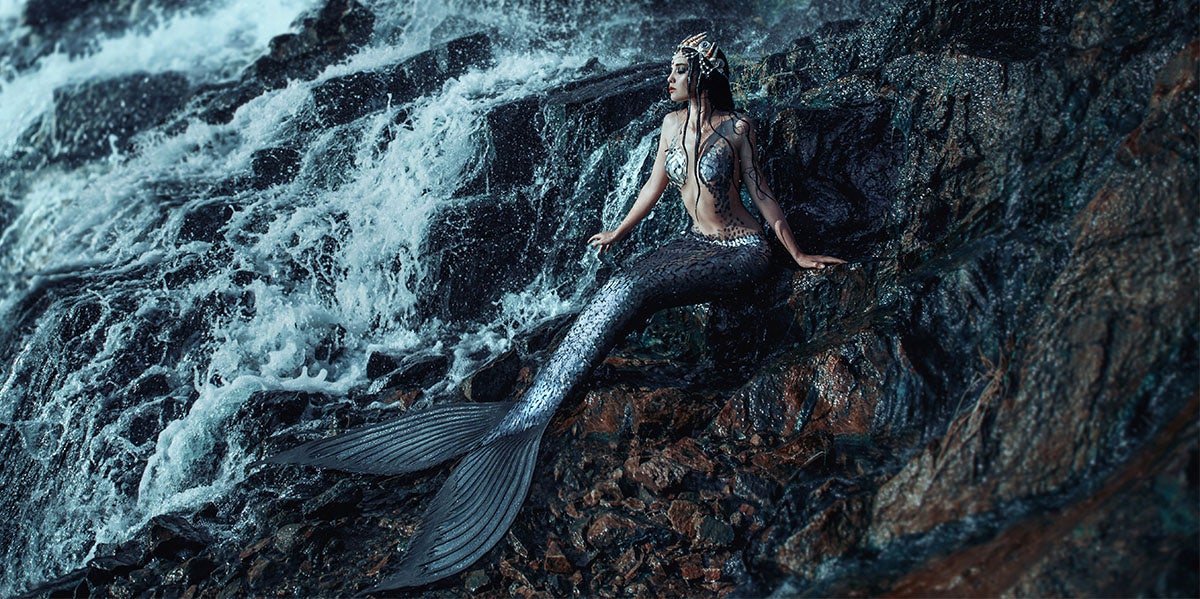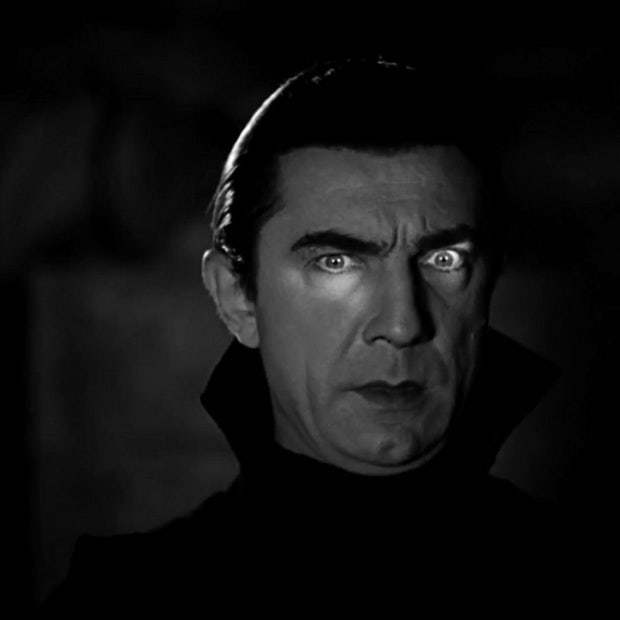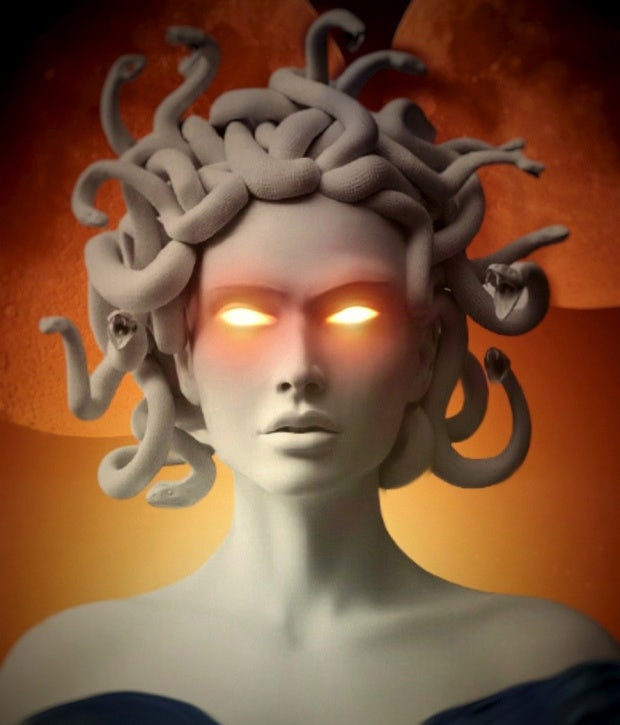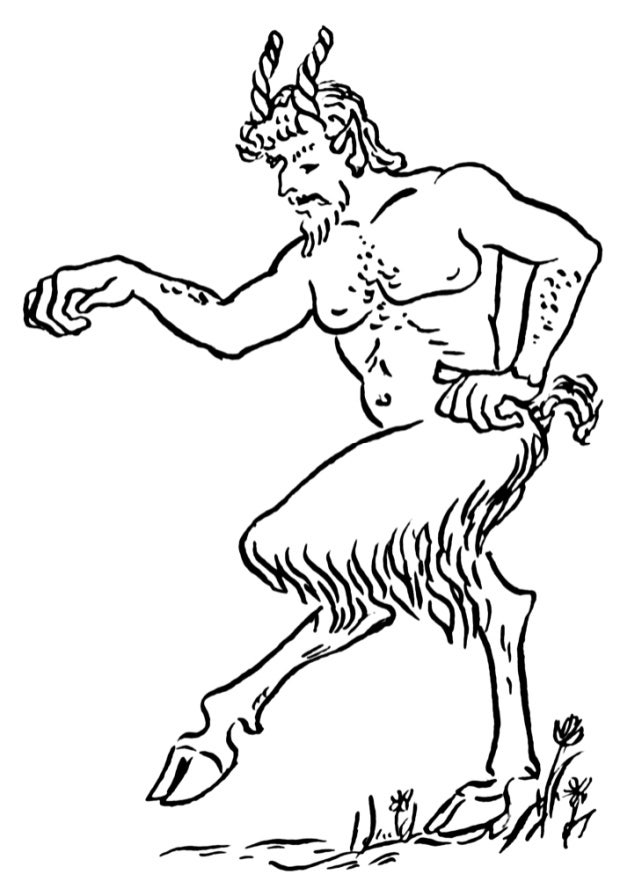35 Mythical Creatures From Myths, Legends, Fantasies & Fairytales
The stuff dreams (and sometimes nightmares) are made of.
 Ironika / Shutterstock
Ironika / Shutterstock From ancient tales of Banshees and goblins to modern depictions of teenage vampires and werewolves on television and in movies, mythological creatures have always intrigued humankind.
The best fairy tales we read as children feature the most fantastical creatures and mythical monsters, like mermaids and ogres.
Most of the legendary creatures that fill up the fantasy films and novels of today have long, storied histories dating back to early cultures and primordial myths many don't know much about.
If you can't help but be fascinated by enchanting entities from fairy tales, myths and legends, the mythological creatures list below will give even more to be curious about.
40 Mythical Creatures from Mythology, Folklore, Fairytales and Legends
1. Vampire
 Photo: Screenshot from "Internet Archive" of the trailer for Dracula (1931), Public domain, via Wikimedia Commons
Photo: Screenshot from "Internet Archive" of the trailer for Dracula (1931), Public domain, via Wikimedia Commons
Origin: Though there have been references to vampire-type creatures since ancient times, those we know today originate in early 18th century southeastern Europe.
From brooding vampire boyfriends in "Twilight" and "The Vampire Diaries" to terrifying monsters in "Nosferatu" and "30 Days of Night," the existence of vampires is present in a variety of cultures across time.
These undead and immortal creatures, typically characterized by pale skin and sharp fangs, feed on the blood of the living and are burned by the sun.
2. Banshee
Origin: Irish folklore
Hearing the piercing shriek of a banshee is never a good sign.
According to Irish mythology and folklore, a banshee is a female spirit whose haunting wail heralds the death of a family member. Physical descriptions of banshees vary from a young beautiful virgin to a one-foot-tall old woman.
3. Pontianak or Kuntilanak
Origin: Indonesian and Malay mythology
The Pontianak, which is described as a beautiful woman with pale skin, red eyes and long black hair, is an astral spirit similar to a vampire that often takes the form of a pregnant woman who is unable to give birth.
The evil ghost uses her pretty appearance and floral scent to lure unsuspecting men and kill them, using her long fingernails to remove their internal organs to eat.
4. Dragon
Origin: Europe, China, Australia and the Americas
From the intelligent serpentine dragons of the East to the flying fire-breathing beasts of the West, tales of these draconic creatures are present in almost every culture across the world.
Today, they repeatedly appear in fantasy fiction, like "Game of Thrones" and "Harry Potter," and are often described as monsters in need of being either tamed or slain.
5. Hydra
Origin: Greek mythology
This many-headed serpentine monster is armed with poisonous breath and blood so toxic that its stench alone is lethal.
In canonical Ancient Greek mythology, the Hydra was eventually killed by Hercules, though it was far from easy as for every head cut off, two would grow back in its place.
6. Unicorn
 Photo: By Domenichino, Public Domain
Photo: By Domenichino, Public Domain
Origin: Ancient Mesopotamian, Indian, Greek and Chinese mythology
This horse-like creature with a single horn is equally majestic and enchanting. Often the legendary animal is described as a symbol of purity and grace.
According to legend, a unicorn's horn is said to contain healing properties, able to cure sickness and make poisoned water potable.
7. Basilisk
Origin: Medieval Europe
Just one look at a basilisk and it's all over, as the serpent king can cause death with a single glance.
The only weakness of the venomous reptile is its recognizable and pungent scent, which is similar to the odor of a weasel.
8. Phoenix
Origin: Greek and Roman mythology
The large red and gold eagle-like creature is a symbol of resurrection and immortality.
At the end of their life, the phoenix is said to burst into flames before once again rising from the ashes, alive and well.
9. Werewolf
Origin: European mythology
Between the handsome heartthrobs of "Twilight" and "Teen Wolf" and the monstrous yet comical beasts in "An American Werewolf in London," depictions of werewolves vary greatly.
Generally, a werewolf, or lycanthrope, is a human who is able to shapeshift into a wolf, often on the night of a full moon.
10. Centaur
Origin: Greek mythology
The fantastical beast with the upper body of a horse and a human head and chest of a man is often depicted as the antagonist in Greek mythology.
The half-human, half-horse creatures are the embodiment of wild and untamed nature.
11. Aqrabuamelu
Origin: Babylonian mythology
Otherwise known as a scorpion man, the Aqrabuamelu is a mythical creature with the body of a scorpion and the face, torso and arms of a man.
By using their tails to sting like their animal counterpart, Aqrabuamelus were said to stand guard outside the gates of the sun god Shamash at the mountains of Mashu.
12. Gorgon
 Photo: Pixabay
Photo: Pixabay
Origin: Greek mythology
The vicious yet beautiful monsters with snakes for hair turned men to stone with just one look.
The most famous of this Greek monster is Medusa, who was eventually beheaded by the Greek hero Perseus. Gorgons serve as a powerful lesson not to be seduced by beauty alone.
13. Faerie
Origin: Various European cultures
The tiny, winged spirits are known to have a human appearance, magical powers, and an inclination towards trickery. While some are malicious, others are benevolent protectors of nature.
Depending on the culture, some believe that faeries are demoted angels or spirits of the dead, while others classify them as elementals or magical entities that personify particular forces of nature.
14. Goblin
Origin: Germanic and British folk tales
Where a goblin is spotted, mischief and mayhem are sure to follow.
The greedy and short-tempered creatures are renowned troublemakers with a grotesque appearance and love of gold and jewelry.
15. Leprechaun
Origin: Irish folklore
The green-wearing, small, bearded shoemakers are said to hide a hidden pot of gold at the end of the rainbow. If you're lucky enough to catch one of the mischievous men, then they will grant you three wishes.
16. Ogre
Origin: French folklore
Although "Shrek" may lead you to believe that ogres are misunderstood creatures with layers like an onion, the legendary monster is actually known to have an appetite for human flesh, specifically that of children.
The hideous, man-like legendary creatures are depicted as dumb and dim-witted, yet violent.
17. Zombie
Origin: Haitian folklore
According to Haitian folklore, a zombie is a dead body reanimated through magic, but modern depictions often credit disease, parasites, and scientific accidents for the existence of the living dead.
The corpse-like creatures consume human flesh and usually result in a zombie apocalypse.
18. Mermaid
 Photo: Ironika/Shutterstock
Photo: Ironika/Shutterstock
Origin: Greek, Syrian, Babylonian and Polynesian mythology
While some mermaids collect thingamabobs and whatchamacallits, others are said to be responsible for disastrous floods, storms, shipwrecks and drownings.
The captivating and alluring human/fish hybrids rule the underwater world, but according to some, they are able to transform into a human form while dry and on land.
19. Golem
Origin: Jewish folklore
Golems are created with clay or mud and a little bit of magic. The anthropomorphic beings are extremely obedient and follow literal orders, so don’t mince your words when working with a Golem.
In some stories, they have been created as a means of protection against antisemitic attacks.
20. Gnome
Origin: European folklore
Today's inanimate lawn ornaments actually originated from woodland spirits that were known to guard underground treasure.
The magical humanoid creatures lived underground and were reluctant to interact with humans.
21. Oni
Origin: Japanese mythology
If you ever wondered what the red-faced monster emoji was, turns out it's an Oni, a giant man-eating monster from Japanese mythology.
They are known to carry heavy iron clubs that they use to violently punish evildoers.
22. Minotaur
Origin: Greek mythology
The ferocious mythical beast with the body of a man and the head and tail of a bull resided at the center of a labyrinth — a gigantic and elaborate maze-like construction — that King Minos of Crete was advised to create by the oracle at Delphi to hold the Minotaur at bay.
23. Cyclops
Origin: Greek mythology
Despite its gigantic size, the one-eyed creature is known to be quite dim-witted, as exemplified in "The Odyssey."
In the ancient Greek epic, Odysseus is trapped in a cave by Polyphemus the Cyclops. Odysseus tells the creature that his name is "Nobody" before blinding him with a sharpened spike.
When Polyphemus calls for help, he screams that he has been “hurt by Nobody,” confusing the other cyclopes and allowing for Odysseus's grand escape.
24. Faun
 Photo: By Pearson Scott Foresman - Archives of Pearson Scott Foresman, donated to the Wikimedia Foundation, Public Domain
Photo: By Pearson Scott Foresman - Archives of Pearson Scott Foresman, donated to the Wikimedia Foundation, Public Domain
Origin: Greek and Roman mythology
A faun, also known as a goat-man, is a half-human half-goat creature that symbolizes peace and fertility. They are known to offer guidance to travelers in need.
25. Loch Ness Monster
Origins: Scottish folklore
Colloquially called Nessie, the sea monster that is said to inhibit the Scottish Highlands is largely assumed to be a myth.
Still, those who claim to have caught a glimpse of the water creature describe it as large and long-necked with one or more humps projecting from the water.
26. Griffin
Origin: Egyptian and Persian mythology
The powerful and majestic creature sports the body of a lion with the head and wings of an eagle.
They are known to guard over treasure and other priceless possessions, often gold.
27. Dybbuk
Origin: Jewish folklore
Dybbuk comes from the Hebrew word for “adhere” or “cling,” which makes sense considering it is described as the dislocated soul of a dead person that then possesses a living human.
The spirit will only leave the host's body once it has accomplished its goal.
28. Hellhound
Origin: European legends
If you spot a dog with mangled black fur, glowing red eyes and a foul odor, run the other way.
Hellhounds are supernatural dogs that guard the entrances to the world of the dead — such as graveyards and burial grounds — and hunt down lost souls, meaning seeing or hearing a hellhound is often an omen of death.
The most famous of these magical mutts is Cerberus, which, according to Greek Mythology, was Hades' three-headed dog that guarded the gates of the Underworld.
29. Yeti
Origin: Himalayan folklore
Otherwise known as Meh-Teh or the Abominable Snowman, this ape-like creature inhabits the Himalayan Mountain range in Asia, although most consider the yeti to be merely a hoax.
30. Nymph
 Photo: Kristina Korotkova/Shutterstock
Photo: Kristina Korotkova/Shutterstock
Origin: Greek mythology
Depicted as a beautiful maiden, a nymph is the personification of nature.
They are often tied to a specific place, like the mountains or the ocean, and are not immortal, but they do live significantly longer than humans.
31. Bigfoot
Origin: North American folklore
In North America, many claimed to have seen the hairy humanoid creature that stands between six and nine feet tall; however, bigfoot — also known as Sasquatch — is widely speculated to be a result of folklore and the misidentification of animals.
32. Bogeyman
Origin: Unknown
As a child, you may have been told terrifying tales of the bogeyman, an evil monstrous creature whose sole purpose is to scare children into good behavior.
Though descriptions of the beast vary not only between cultures but also households, generally they are depicted as having claws, talons and sharp teeth.
33. Water Sprite
Origin: European mythology
The ethereal entities are similar to faeries and are strongly connected to the element of water. In fact, they are able to breathe both water and air.
34. Chimera
Origin: Greek mythology
The fire-breathing crossbred creature is part lion, part goat and part snake.
According to "The Iliad," the king of Lycia ordered the hero Bellerophon to kill the hybrid beast, hoping that Bellerophon would instead be killed. In the end, the hero successfully slayed the Chimera.
35. Satyr
Origin: Greek mythology
The comically hideous male nature spirit has the body of a human with the ears and tail of a horse.
Although they are known to be lovers of wine, music, dancing and women, most notably they are known to always be naked and in a constant state of arousal.
Luckily, Satyrs inhabit remote locations — such as woodlands, mountains, and pastures — so you don’t have to worry about running into the over-excited beast.
Audrey Jaber is a writer living in Boston, Massachusetts. She covers a variety of topics for YourTango, including news, entertainment and astrology.

